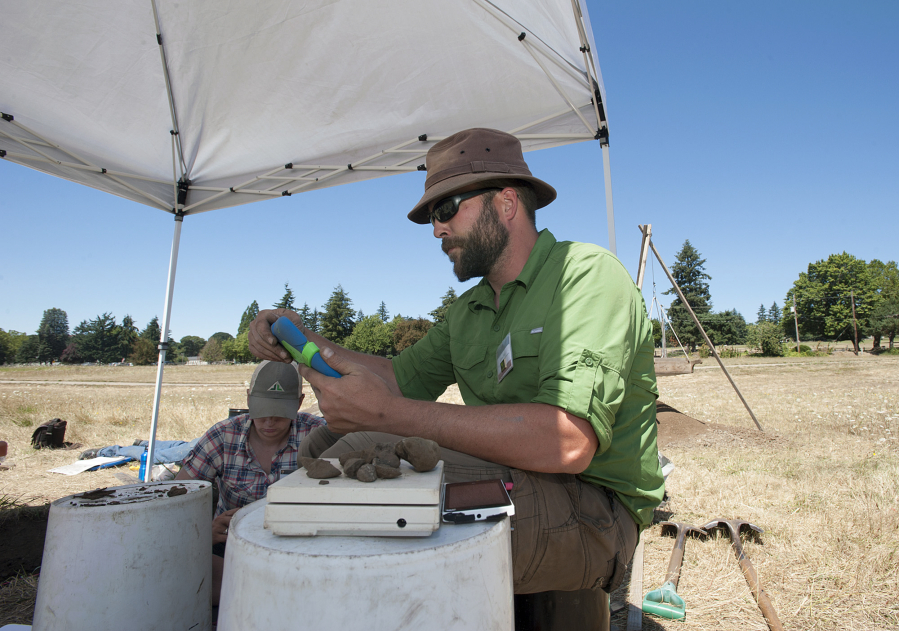James Ficek was no stranger to Fort Vancouver. Like many people who have lived in Clark County, “I’ve always walked by the fort.”
But after several weeks of archaeological research, “I know a lot more now,” Ficek said.
He is part of the 2016 summer field school at Fort Vancouver National Historic Site — one of several college students getting hands-on experience at an actual archaeological dig.
On Wednesday, the Washington State University Vancouver senior and several teammates were carefully excavating at the site of the World War I spruce mill, just east of the replica Hudson’s Bay Company stockade.
“We’ve found nails, metal fragments, pieces of vessel glass,” said Katie Tipton, a Portland State University graduate student.
Vessel glass is rounded — maybe a piece of a bottle — as opposed to flat glass that might be a window pane fragment, the teaching assistant explained.
The spruce-mill dig was one of several summer excavation sites. A highlight of the season, which ends Saturday, was along the Columbia River waterfront.
“At the Hudson’s Bay waterfront site, we found intact two different periods of use,” said field school director Doug Wilson, National Park Service archaeologist. “We found the Hudson’s Bay Company complex there.”
In addition to evidence such as charcoal and bone, the students turned up bits of glass and ceramics.
As they continued to dig, they found evidence of an Indian site that had been established on the riverfront before white traders and explorers arrived.
“That is very exciting. We always thought a small village or fishing camp had been there,” Wilson said.
It’s no surprise that different groups would occupy that site over the centuries, Wilson said.
“It’s a good spot. It would make sense that the Hudson’s Bay Company would put its waterfront complex at that site.”
Another riverfront site was used by the U.S. Army from the 1880s or ’90s up to World War I.
“We knew they had an incinerator where they burned refuse,” Wilson said. “Back in the Hudson’s Bay Company’s day, they could dump refuse behind their house. By the turn of the century, there was a plethora of refuse they had to deal with. An incinerator was an easy way to get rid of it. It looked like they were dumping that debris into the Columbia River.”
It wasn’t all completely burned, however.
“We found some larger artifacts,” Wilson said. “Besides lots of valuable information about lives of soldiers, that deposit also tells us where the edge of the old waterfront was.”
An excavation in the East Vancouver Barracks wasn’t as productive.
“We were looking for one of the first sanitary facilities for soldiers,” Wilson said. “We used our maps and (geographic information system) to try to find it, but didn’t find much of anything. I guess when the Army demolished the building, they did a good job and scraped it all off.”




